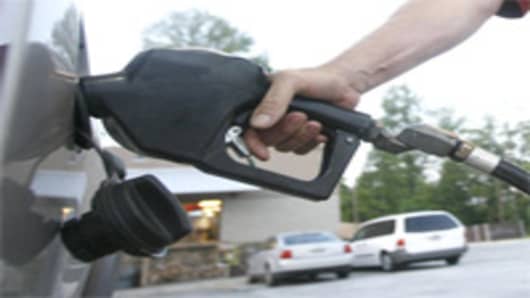Crude oil prices are expected to average $110 a barrel this year, about $9 more than forecast last month, the government's top energy forecasting agency said.
U.S. drivers, meanwhile, will pay an average $3.66 a gallon for gasoline this summer, up 12 cents from earlier estimates, the Energy Information Administration said.
Pump prices are expected to peak at $3.73 a gallon in June, 11 cents more than previously projected, the agency said.
In one bit of good news, higher U.S. gasoline prices and a slowing economy will cut into U.S. oil demand through the summer driving season much more than previously thought, the EIA said.
"Based on projections of weak economic growth and record high crude oil and product prices, (petroleum) consumption is projected to decline," the agency.
High fuel costs, along with a weak economy, will take an even bigger bite out of gasoline consumption, which was already forecast to decline from last summer.
The EIA said it expected total petroleum demand, which includes gasoline, diesel fuel and jet fuel, in the current quarter to be 90,000 barrels a day less than last month's forecast and down 170,000 barrels a day compared to the second quarter of last year.
Petroleum consumption in the upcoming third quarter was revised down by 100,000 barrels a day, increasing just 10,000 barrels per day from the third quarter of 2007, the EIA said.
For all of 2008, demand will decline by 190,000 barrels a day, 90,000 barrels per day more than the agency said in last month's forecast.
By contrast, world oil consumption is forecast to grow by 1.2 million barrels per day this year, with most of the increase in demand led by China, Middle East oil producing countries, Russia, Brazil and India, the EIA said.
Oil demand in the major industrialized countries is projected to change little this year, with higher oil use in Europe offsetting declining consumption in the United States, the agency said.
A combination of rising global oil demand, fairly normal crude inventories and low unused oil production capacity will provide "firm support" for petroleum prices, the EIA said.


